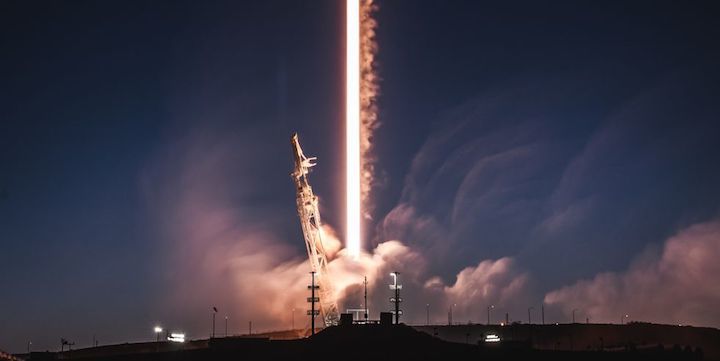1.03.2018
Everyone’s heard the mantra "space is hard." These 10 launch disasters show how many things can go wrong.

Launching rockets to space is a high-stakes, unforgiving business, with razor-thin margins between success and failure and catastrophic consequences when things go wrong. Sometimes the smallest problems can doom a payload—and in the most tragic circumstances, an entire crew.
Here are 10 examples from recent history that reminds us of how tough this business can be.
In 2003, Brazil had high hopes to become a spacefaring nation. The country occupies a perfect spot on the equator, where the Earth’s spin bestows extra lifting power upon a rocket. But in August, three days before a scheduled launch by the Brazilian Space Agency, the town of Alcantara shook with a massive explosion.
At the spaceport, a towering column of dark smoke rose from where a solid-fuel VLS-1 rocket once stood. The detonation killed 21 people and injured scores more.
The investigations that followed were “damning,” according to the AP. It cited several hazards, any of which could cause a disaster. Volatile gases gathered while sensors failed, and the rocket suffered from electromagnetic interference. The report never identified the exact electrical discharge that ignited one of the rocket's four solid fuel boosters and caused the calamity. Instead, it focused on the lax way the spaceport was run.
“We observed a lack of formal, detailed risk management, especially in the conduct of operations involving preparations for launch,'' the report said. It described the staff as stretched thin and overworked. The nation’s budget for their space program that year wasn't over $20 million. The report compares that figure to India’s space budget that year at $300 million.
The lesson of Alcantara is clear. Making spaceflight more affordable has to come second to safe operations. Painstaking procedures and redundant safeguards take extra manpower and are not cheap, but they are necessary.
And that idea extends to the kind of fuel you use. Solid rocket boosters are easier to use but more dangerous as well. You can’t turn a solid rocket engine off, or even turn it down, once it gets going. If you’re using one, better plan on adding some extra safeguards.
The blast basically ended Brazil’s aspirations to build a space program—for a time. The nation's space dreams remained dormant until last week, when government officials said aerospace companies including SpaceX, Vector, and Lockheed Martin showed interest in launching from Brazil.
To understand how multi-stage rockets work, think of them as a relay team running a race against the thickness of the Earth’s atmosphere and the pull of gravity.
The first stage ignites and carries the rocket to a certain altitude, dropping away when it becomes worthless mass. At that point, the next stage ignites and carries the payload toward space. The Russian Soyuz, for example, drains and drops three such rocket segments before a final stage, called the Fregat, takes over to bring the payload to the right place in orbit.
On May 22, 2009 that payload is a Russian military satellite. Everything looks good through two stage separations. It’s a night launch, and residents of the city of Kazan see what looks like an incandescent comet creasing the sky, a billowing trail behind it. But failure is always lurking during a rocket launch. The third stage isn’t holding up its end of the relay and quits just three seconds early, according to sources cited by Russian aerospace reporter and PM contributor Anatoly Zak.
Each unburned second means to a loss of altitude. The Fregat burns for about nine minutes to reach 130 miles high. There it coasts for 15 minutes before the engine reignites and carries the payload even higher. Or at least, it’s supposed to. But the upper stage runs out of fuel early. Satellite spotters from NORAD and hobby boards all notice the same thing—the shape of this sat's orbit is off. The communications satellite gets trapped in a bunk orbit and declared useless.
Even the most banal calculations can make or break you in spaceflight. Running out of fuel, even for a few seconds, can mean the whole effort was a waste.
The Kwajalein Atoll lies 2,500 miles southwest of Hawaii in the middle of Pacific nowhere. Unarmed warheads launched from California make their way here during ICBM tests because, well, there's room to spare. And Kwajalein has one other function—it's where SpaceX rented a pad to test experimental space rockets.
In March 2006, four years after Musk founded SpaceX, company techs prepared a 70-foot-tall Falcon 1 for launch. Elon Musk needed to prove his hardware could fly and fly consistently if he was going to realize his spacefaring dreams. Weeks of tests precede the launch, and the rocket is left exposed to the salty air. Finally, on March 26, the Falcon 1 heads to space with an Air Force Academy payload on board.
The countdown proceeds; no warnings sound. As the countdown ticks down to T-minus 2 seconds, the rocket’s valves open to let propellant flow. At that moment, an aluminum nut gives way, spewing fuel. That fuel ignites during the launch. The rocket rises for 34 glorious seconds before the flames chew through a pneumatic line, which kills the engine. Later, analysis will show that air rusted the aluminum, weakening the nut to the point that it failed under the stress of launch. For this minor sin, the entire rocket suffers.
Engineering is all about testing, failing, learning and rebuilding. More attempts for a perfect launch followed, and failed. But on September 28, 2008, Falcon 1 became the first privately developed, liquid-fueled launch vehicle to reach orbit, and set SpaceX on course for everything that has come after.
Quelle: PM
